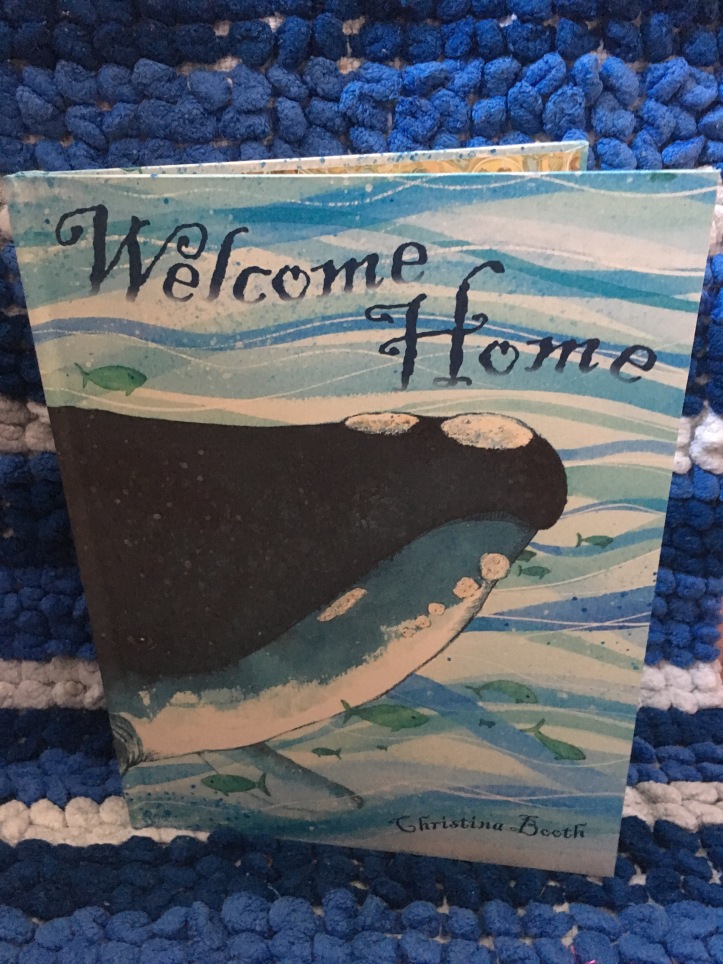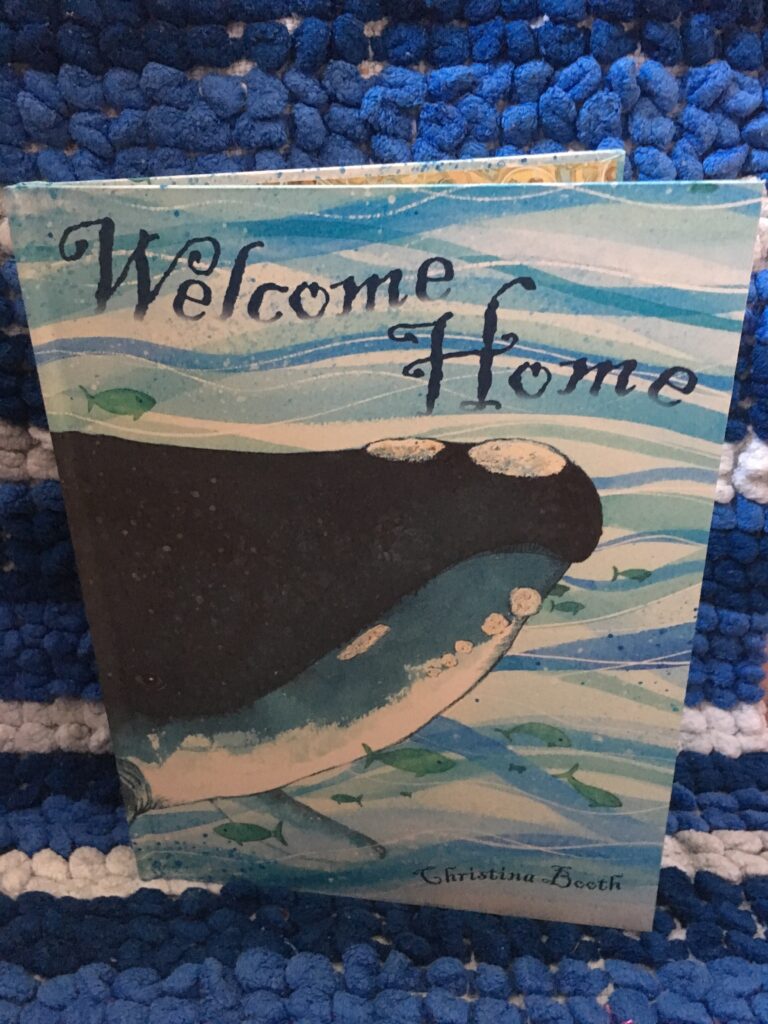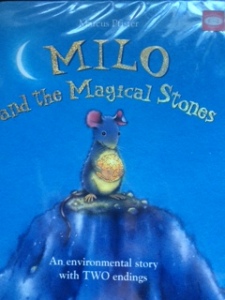We do not inherit the earth from our ancestors we borrow it from our children
– Chief seattle.
Welcome Home by Christina Booth is a story of a young boy who can hear whales singing when no one else does. He hears sounds of joy and sadness and listens to stories she tells while he is asleep.

The whale tells of fear and darkness in tales of whaling of the past.
Why did they hurt us and chase us away?
The illustrations illuminate this fear and emptiness and make you wonder why whaling was such a sport.
The whale tells the young boy that she wanted to come home but they do not feel safe –
Sorry – the boy whispers.
The journey the reader embarks on is one of critical thought – why did people go whaling? How has this sport impacted the ocean? How can activities we take part in today impact the future?
Although whaling and the issues that surround it can come across quite strongly – this picture book approaches the dark past in a more gentle manner allowing children to explore the issue without feeling fear or guilt but rather a sense of empowerment.
Welcome Home was inspired but the birth of a whale calf in the Derwent river in 2010 – the first for over 190 years. It is a beautiful read and one that needs to be read to the future.
So where to from here:
SUSTAINABILITY
- How do actions we take every day impact the future?
- Do people have a right to hunt whales today? Explore the pros and cons of whaling as you try to understand why some countries still whale. Look at whaling from their perspective and see how you could change their mind using their perspective on whales.
- Create a story about an action in the past that has impacted our current environment in a negative way? Create this story so that readers can learn from this mistake.
- How are we connected to whales? Do we need whales for our ecosystem to survive? Look at life cycle charts and food chains to explore this question.
NUMERACY
- Investigate the whale numbers around the world and compare to previous years. How are the numbers changing?
- Look at the different shapes of whales and the patterns of symmetry.
- Whales can have barnacles living on them. Which species have this? How many barnacles could fit on a whale?
LITERACY
- Storytelling is an important gift that we all have. What would the world be like without storytelling? Can you think of what your life would look like without stories?
- Write a letter, create a magazine advertisement that implores people to think about whaling and the horrific side effects. Great way to use persuasive and emotive language.
- The whale told this story to the young boy – could this story be told to an adult? How would the story be different.
- Explore personification used throughout the story: Tugs at my heart, the moon danced on the waves. How does this language make you feel?



